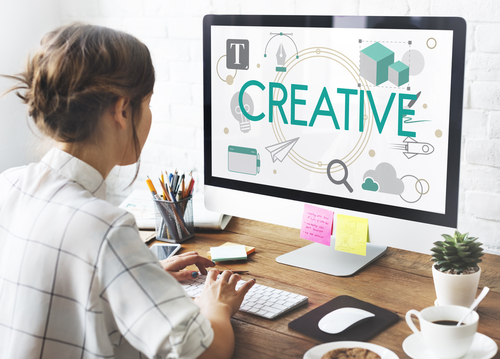What Skills Should I Develop to Become a Graphic Designer?
Graphic design is a profession that is always in demand, and graphic designers with the right skill set can expect excellent employment opportunities throughout their careers. As a graphic designer, it’s important to stay up-to-date on the latest technologies and trends in the industry. Graphic artists should have in-depth knowledge of a wide range of software applications and design styles. Knowing how to work with a variety of formats and media is a big plus for designers who want to maximize their job prospects.
Photo Editing
The most important skill for graphic designers to develop is photo editing. Clients request photo manipulations, collages, retouches and enhancements more often than any other design task. Raster-based images, such as photos stored in JPEG, PNG or TIFF format, are used in Web advertising and promotions on image-sharing websites. Software applications such as Photoshop, Affinity Photo and GIMP enable designers to cut and paste sections of images, blend layers together and adjust the colors of a photo to make it more eye-catching. Anyone pursuing a career in graphic design should become highly proficient in Adobe Photoshop.
Vector Editing
Vector editing is a secondary skill that many clients may require from time to time or on a regular basis. Vector-based images are stored in a much different format than raster-based images. To better understand vector graphics, it can be helpful to open a vector file in a text editor to see its contents. While raster-based image files are stored in a huge sequence of literal pixel data, vector-based images are stored in a sequence of instructions indicating how to draw a raster image in the viewport of a vector editor, such as Adobe Illustrator, Affinity Designer or Inkscape. Because vectors contain instructions for drawing images on a computer screen, they can be scaled to any size without affecting the quality of the image. Most people are probably familiar with vectors from applications that use scalable fonts. The typefaces in applications such as Microsoft Word and Google Docs can be scaled without causing pixelation because they’re stored in vector format.
Typography
Typography is another useful skill for graphic designers to develop. Typography is the art of pairing typefaces together and arranging text in signs and artwork. An important skill related to typography is logo design. Clients hire graphic designers to create company logos with eye-catching fonts and memorable graphics. Typography and logo design are typically done in Adobe Illustrator, so it’s highly recommended for professional designers to be proficient in Illustrator. According to the Bureau of Labor Statistics, one of the primary responsibilities of graphic designers is adding typography to graphics for images published on the websites of their clients. Typography can also be used to design signage, T-shirts, posters and other print media. While fewer graphic designers are employed in print media, traditional graphic design skills can make your resume stand out from others and help you find employment opportunities in unexpected places.
Conclusion
Getting started in graphic design can be a easy as learning how to use Photoshop and Illustrator. While a college degree may be advantageous during a job search, many clients don’t care about the education of the designers they hire, instead basing their decision on the portfolio of an artist. The most important task of a budding graphic designer is to develop the appropriate skills for the job.
Related Resources:
